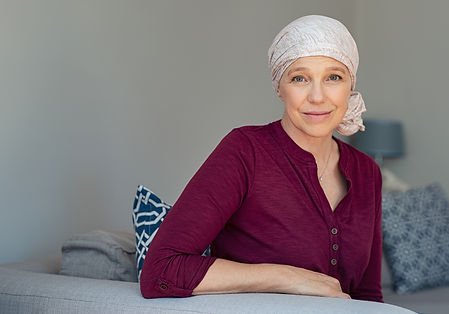

TEL:+1 705-748-2008
PETERBOROUGH, ONT
Cancer Rehabilition
Cancer rehabilitation focuses on reducing or eliminating side-effects of cancer treatment and improving your strength, function and quality of life.
Physiotherapy helps manage the effects of surgery, radiation, and chemotherapy from cancer treatment. These effects may include fatigue, numbness and tingling, lymphedema, swelling, tightness, weakness and menopausal symptoms from estrogen loss.
As always, we assess each client and provide an individualized exercise plan to improve quality of life, revive confidence and significantly enhance function.
Research shows that exercise is safe and helpful before, during, and after cancer treatment. Exercise can help improve the energy. It can also help you cope with some of the side effects of treatment. Exercise can also possibly decrease your risk of developing new cancers in the future!
It can be difficult and scary to figure out what exercise is best for you and how to consistently participate. There are several times during your treatment that you will need your exercise plan altered and we can help you with all of this.

Before Your Cancer Treatment
Becoming more active or staying at your current level of physical activity before treatment may help you handle and recover from your treatment more easily. Research shows exercise may reduce complications from surgery and may help you handle treatment better. Also, physical activity may help you deal with distress and anxiety, have more energy, and sleep better as you begin treatment.
Many people find that as they start their treatment, the ability to be active may be harder. Therefore, starting out in better physical shape means you can tolerate more activity during and after treatment.
During Treatment
Certain things affect your ability to exercise during treatment, such as:
-
The type and stage of cancer you have
-
Your cancer treatment
-
Your endurance, strength, and fitness level before and during treatment
If you exercised before treatment, you might need to exercise less or at a lower intensity during treatment. The goal is to stay as active as you can. People who were very inactive before cancer treatment may need to start with short, low-intensity activity, such as short slow walks.
After Your Treatment
Most people are able to slowly increase exercise time and intensity as their side effects lessen. What may be a low- or moderate-intensity activity for a healthy person may seem like a high-intensity activity for some cancer survivors. Take your time and be patient with yourself as you gradually increase your activity level.
Living Cancer Free or with Stable Cancer
During this time, physical activity is important to your overall health and quality of life. Research shows that getting to and staying at a healthy weight, eating right, and being physically active may help reduce the risk of other serious chronic diseases, as well as the risk of a second cancer.
A healthy lifestyle might also decrease the risk of some cancers coming back. Many research studies have looked at the impact of physical activity on cancer recurrence and long-term survival. Exercise improves cardiovascular fitness, strength, fatigue, anxiety, depression and several quality of life factors in cancer survivors. Studies of people with breast, colorectal and prostate cancers suggest that physically active cancer survivors have a lower risk of cancer recurrence and improved survival compared with those who are inactive.